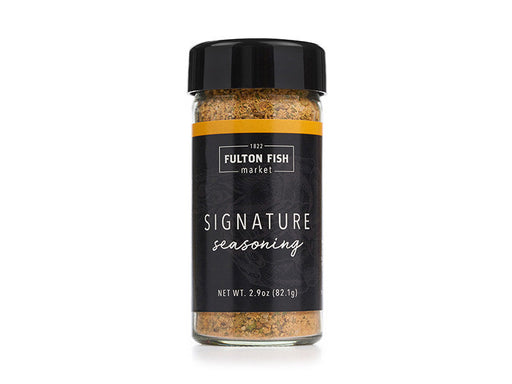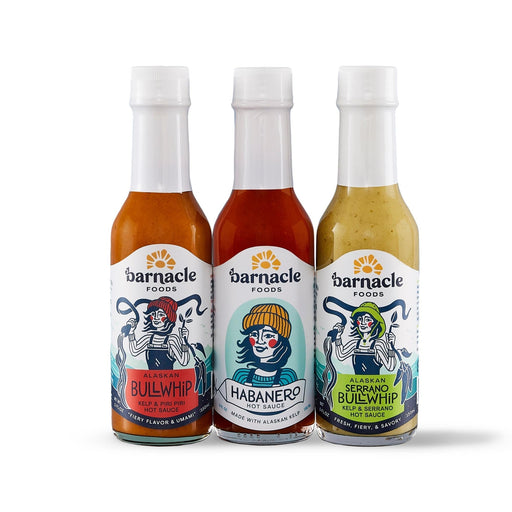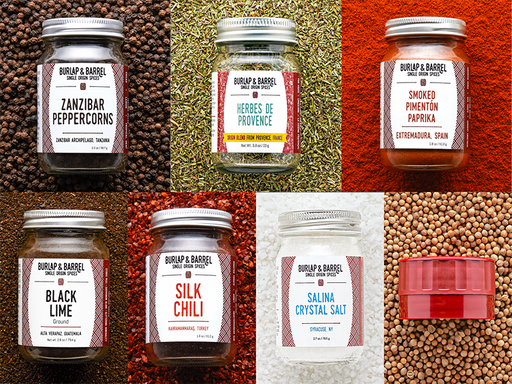Sauces / Spices
Delivery options ( See all Member Benefits )
-
View Details
 Save 0%
Save %
Original price $16.99 - Original price $16.99Original price$16.99$16.99 - $16.99Current price $16.99
Save 0%
Save %
Original price $16.99 - Original price $16.99Original price$16.99$16.99 - $16.99Current price $16.99This item ships FREE!
Our thick, rich classic cocktail sauce is a must in every seafood lovers’ pantry. Zesty, bold and rich, use it as a dipping sauce for oysters, cla...
View full detailsOriginal price $16.99 - Original price $16.99Original price$16.99$16.99 - $16.99Current price $16.99Save 0% Save % -
View Details
 Save 0%
Save %
Original price $15.99 - Original price $15.99Original price$15.99$15.99 - $15.99Current price $15.99
Save 0%
Save %
Original price $15.99 - Original price $15.99Original price$15.99$15.99 - $15.99Current price $15.99This item ships FREE!
Our Fulton Fish Market Signature Seasoning is the perfect combo of fruity and smokey to complement any type of fish! Custom blended exclusively for...
View full detailsOriginal price $15.99 - Original price $15.99Original price$15.99$15.99 - $15.99Current price $15.99Save 0% Save % -
View Details
 Save 0%
Save %
Original price $15.99 - Original price $15.99Original price$15.99$15.99 - $15.99Current price $15.99
Save 0%
Save %
Original price $15.99 - Original price $15.99Original price$15.99$15.99 - $15.99Current price $15.99This item ships FREE!
Our Fulton Fish Market Salmon Seasoning is the perfect combo of sweet and smoky to complement the savory meaty flavor of salmon! Custom blended ex...
View full detailsOriginal price $15.99 - Original price $15.99Original price$15.99$15.99 - $15.99Current price $15.99Save 0% Save % -
View Details
 Save 0%
Save %
Original price $16.99 - Original price $16.99Original price$16.99$16.99 - $16.99Current price $16.99
Save 0%
Save %
Original price $16.99 - Original price $16.99Original price$16.99$16.99 - $16.99Current price $16.99This item ships FREE!
Well balanced with a perfect amount of horseradish, our classic Seafood Remoulade Sauce is inspired by New Orleans’ vibrant seafood culture. Rich,...
View full detailsOriginal price $16.99 - Original price $16.99Original price$16.99$16.99 - $16.99Current price $16.99Save 0% Save % -
View Details
 Save 0%
Save %
Original price $16.99 - Original price $16.99Original price$16.99$16.99 - $16.99Current price $16.99
Save 0%
Save %
Original price $16.99 - Original price $16.99Original price$16.99$16.99 - $16.99Current price $16.99This item ships FREE!
Smooth, rich and succulent, our delicious bourbon glaze is a must for imparting great flavor on any type of seafood. Brush over fish or shellfish b...
View full detailsOriginal price $16.99 - Original price $16.99Original price$16.99$16.99 - $16.99Current price $16.99Save 0% Save % -
View Details
 Save 0%
Save %
Original price $16.99 - Original price $16.99Original price$16.99$16.99 - $16.99Current price $16.99
Save 0%
Save %
Original price $16.99 - Original price $16.99Original price$16.99$16.99 - $16.99Current price $16.99This item ships FREE!
Vibrant, aromatic and with a hint of spice, our sesame ginger sauce pairs perfectly with grilled tuna and shellfish, or toss through bass, snapper...
View full detailsOriginal price $16.99 - Original price $16.99Original price$16.99$16.99 - $16.99Current price $16.99Save 0% Save % -
View Details
 Save 0%
Save %
Original price $15.99 - Original price $15.99Original price$15.99$15.99 - $15.99Current price $15.99
Save 0%
Save %
Original price $15.99 - Original price $15.99Original price$15.99$15.99 - $15.99Current price $15.99This item ships FREE!
Our Fulton Fish Market White Fish Seasoning is the perfect combo of citrus and sweet to complement the mild, sweet flavor of any white fish. Custo...
View full detailsOriginal price $15.99 - Original price $15.99Original price$15.99$15.99 - $15.99Current price $15.99Save 0% Save % -
View Details
 Save 0%
Save %
Original price $30.00 - Original price $30.00Original price$30.00$30.00 - $30.00Current price $30.00
Save 0%
Save %
Original price $30.00 - Original price $30.00Original price$30.00$30.00 - $30.00Current price $30.00This item ships FREE!
We have teamed up with Barnacle Foods to offer you this amazing hot sauce bundle! Want a little something to go splash happy with on your favorite ...
View full detailsOriginal price $30.00 - Original price $30.00Original price$30.00$30.00 - $30.00Current price $30.00Save 0% Save % -
View Details
 Save 4%
Save %
Original price $61.39Original price $61.39 - Original price $61.39Original price $61.39Current price $58.99$58.99 - $58.99Current price $58.99
Save 4%
Save %
Original price $61.39Original price $61.39 - Original price $61.39Original price $61.39Current price $58.99$58.99 - $58.99Current price $58.99This item ships FREE!
Elevate your dishes with Burlap & Barrel's 6-spice collection exclusively curated for Fulton Fish Market. This set of single origin spices brin...
View full detailsOriginal price $61.39Original price $61.39 - Original price $61.39Original price $61.39Current price $58.99$58.99 - $58.99Current price $58.99Save 4% Save % -
View Details
 Save 0%
Save %
Original price $75.00 - Original price $75.00Original price$75.00$75.00 - $75.00Current price $75.00
Save 0%
Save %
Original price $75.00 - Original price $75.00Original price$75.00$75.00 - $75.00Current price $75.00This item ships FREE!
We have teamed up with Barnacle Foods to offer you a starter pack with our favorites! Barnacle Foods turns Alaska-grown ingredients (think KELP... ...
View full detailsOriginal price $75.00 - Original price $75.00Original price$75.00$75.00 - $75.00Current price $75.00Save 0% Save %











